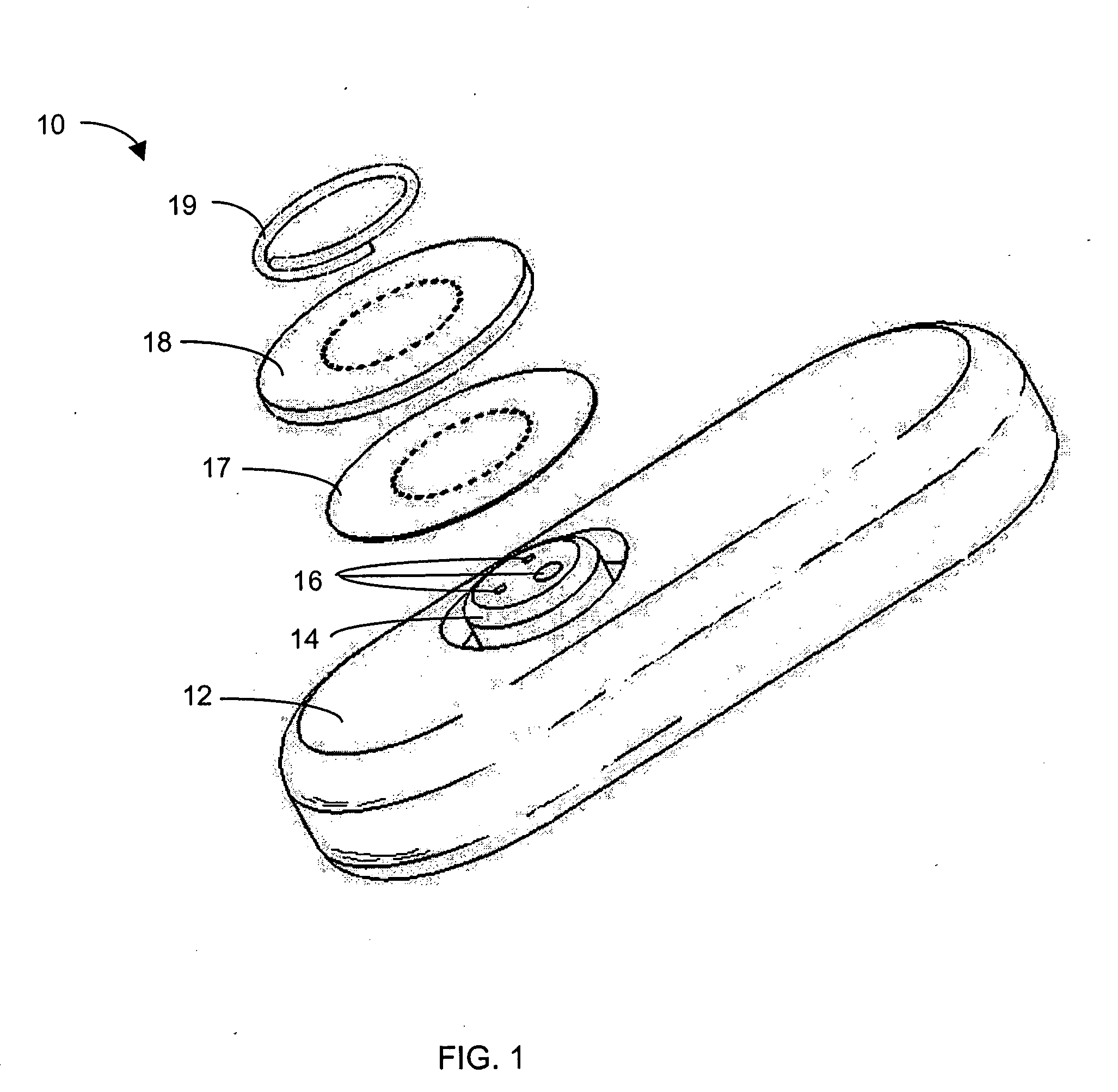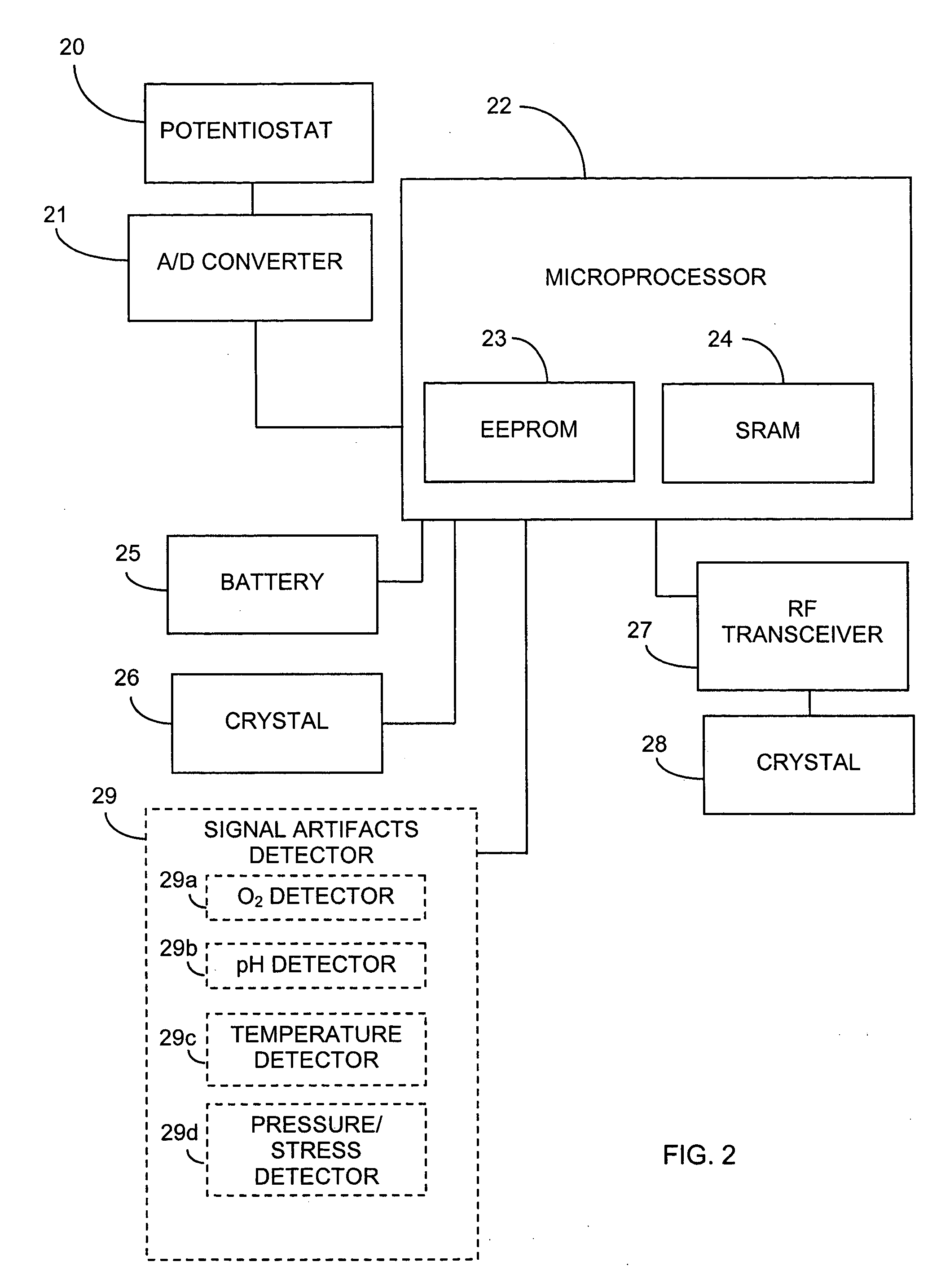Systems and methods for replacing signal artifacts in a glucose sensor data stream
a technology of signal artifacts and data streams, applied in the field of systems and methods for replacing signal artifacts in glucose sensor data streams, can solve the problems of inability to know if the blood glucose value is going up (lower) or down (higher) based on conventional methods, and the complications of implantable glucose sensors within the body, so as to accurately detect and replace signal noise, and avoid hyperglycemic and hypoglycemic conditions.
- Summary
- Abstract
- Description
- Claims
- Application Information
AI Technical Summary
Benefits of technology
Problems solved by technology
Method used
Image
Examples
first embodiment
FIG. 3A illustrates a first embodiment wherein the receiver 30 shows a numeric representation of the estimated glucose value on its user interface, which is described in more detail elsewhere herein.
second embodiment
FIG. 3B illustrates a second embodiment wherein the receiver 30 shows an estimated glucose value and approximately one hour of historical trend data on its user interface, which is described in more detail elsewhere herein.
third embodiment
FIG. 3C illustrates a third embodiment wherein the receiver 30 shows an estimated glucose value and approximately three hours of historical trend data on its user interface, which is described in more detail elsewhere herein.
PUM
 Login to View More
Login to View More Abstract
Description
Claims
Application Information
 Login to View More
Login to View More - R&D
- Intellectual Property
- Life Sciences
- Materials
- Tech Scout
- Unparalleled Data Quality
- Higher Quality Content
- 60% Fewer Hallucinations
Browse by: Latest US Patents, China's latest patents, Technical Efficacy Thesaurus, Application Domain, Technology Topic, Popular Technical Reports.
© 2025 PatSnap. All rights reserved.Legal|Privacy policy|Modern Slavery Act Transparency Statement|Sitemap|About US| Contact US: help@patsnap.com



